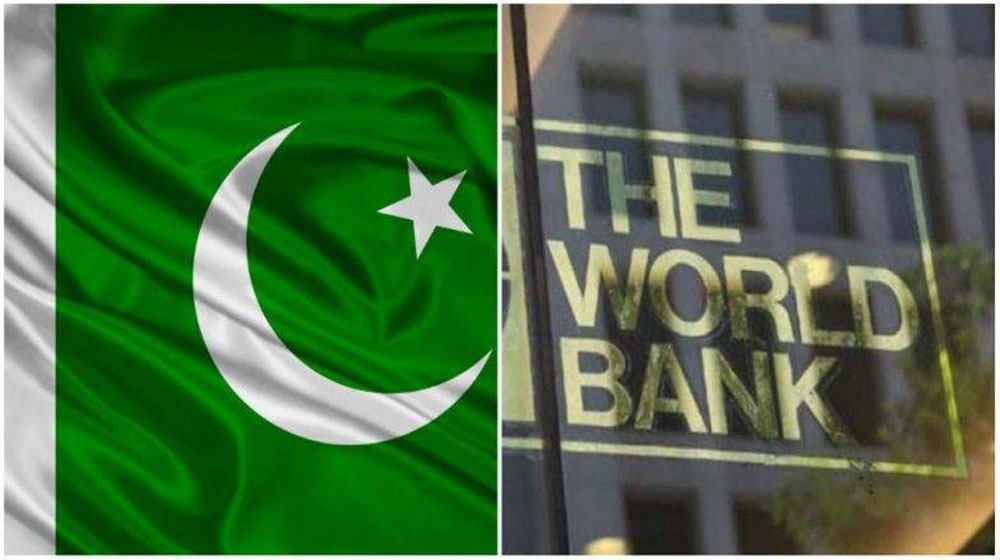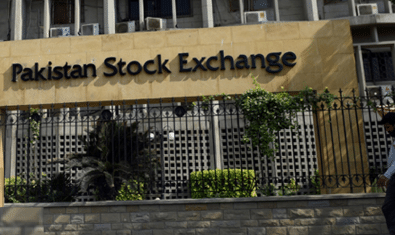Pakistan’s economic growth is expected to recover slowly, given heightened uncertainty surrounding the COVID-19 pandemic, besides economic activity is projected to be dampened in the short-term by fiscal consolidation measures associated with the resumption of the International Monetary Fund (IMF) stabilization program, says the World Bank.
The World Bank’s report “Pakistan Development Update” released on Tuesday said that economic growth is expected to remain below potential, reaching 1.3 percent in the fiscal year 2021 and strengthening to 2 percent in the fiscal year 2022 and 3.4 percent in 2023.
Pandemic Pressures and GDP Growth
Real GDP growth at factor cost is estimated to have declined from 1.9 percent y-o-y in the fiscal year 2019 to 1.5 percent in the fiscal year 2020, the first contraction in decades. This reflected the effects of the COVID-19 pandemic-related containment measures that followed the monetary and fiscal tightening associated with the IMF Extended Fund Facility (EFF).
Pakistan’s near-term economic prospects are subdued. There are also considerable downside risks to the outlook, especially with the ongoing third wave of the infection that could trigger more protracted and extensive lockdowns, stifling the fragile recovery, it added.
International Financing Can Tighten for Pakistan
Unanticipated policy unwinding among advanced economies could trigger safe-haven effects, leading to a sudden tightening of international financing conditions, which in turn could contribute to financial volatility, higher external financing risks, and increase debt servicing costs. Such risks would be further compounded if Pakistan faces difficulties in rolling over bilateral debt from non-traditional donors, the report noted.
The government is attempting to meet a fiscal deficit (excluding grants) target of 7.1 percent of GDP, which is contingent on robust revenue performance, an almost 14 percent increase in revenues, including a 26.2 percent increase in taxes.
With rigid expenditures and low revenues due to the economic slowdown, there is limited fiscal space to address any additional shocks, including those from the pandemic. An additional COVID-related expenditure, at either the federal or provincial government levels, including any expenditure on purchasing vaccines, can derail efforts to meet the fiscal deficit target, the Fund added.
Current Account Deficit May Widen
The current account deficit is projected to gradually widen as domestic demand picks up and international trade recovers. Export values are projected to decline in the fiscal year 2021 amid weak global demand, whereas import values are projected to grow in line with the recovery in domestic economic activity.
However, the current account deficit is projected to narrow to 0.8 percent of GDP, as a wider trade deficit is more than offset by stronger remittance inflows. The current account deficit is projected to gradually widen to 1.7 percent of GDP in 2023, with import values growing alongside domestic demand and higher projected oil prices.
State-Owned Enterprises, Civil Service and Pension Remain a Fiscal Risk
The Federal Government is in the process of implementing SOE reform plans, including preparing an SOE law, an SOE policy, and undertake possible divestments and restructuring of certain SOEs. However, these reforms have not been finalized and have considerable political economy implications, which must first be addressed. SOEs, therefore, continue to be a source of fiscal risk, especially as they account for significant extra-budgetary transactions of the federal government.
Besides, civil service and pensions continue to be a growing source of fiscal risk for the government. Federal and provincial employee compensation accounted for at least 23 percent of national expenditures in 2019, while pensions in 2019 were an additional 10 percent of the total national expenditure.
Reforms are being planned for civil service at the federal government, while all governments are planning pensions’ reforms, with an aim to have partially funded pension programs in place to ease the financial burden off the budget in the medium-long term.
Delay in Reforms Can Worsen Fiscal Deficit
The report further noted that the fiscal deficit (excluding grants) is projected to reach 8.4 percent of GDP in the fiscal year 2021, partly due to subdued economic activity and the settlement of arrears in the power sector. As critical revenue-enhancing reforms gain pace, the fiscal deficit (excluding grants) is projected to gradually narrow to 7 percent of GDP by 2023.
Under the baseline scenario, revenue collection is expected to increase over the medium term as growth recovers, and the government implements structural reforms related to GST harmonization, rolls back tax expenditures, streamlines tax rates, and improves the withholding tax regime.
The fiscal deficit targets in the 2021 budget were also planned to be achieved by having lower Federal subsidy payments, as the government had plans to undertake significant reforms to manage the ballooning circular debt and its fiscal implications.
By the end of December 2020, the government had already incurred 61.7 percent of the budgeted subsidies expenditure, and any delay in the reforms could result in the government overshooting its budgeted target for subsidies.
The federal budget estimates a provincial surplus of Rs. 242 billion (0.5 percent of estimated GDP) for 2021 to reach the national fiscal deficit (excluding grants) of 7.1 percent of GDP. Thus far during the year, despite lower levels of federal transfers and higher provincial current expenditure, provincial governments have still managed to post a consolidated fiscal surplus of Rs. 170 billion.
However, the surplus is 29.3 percent narrower than in H1 2020. Given the provincial budgetary projections, it is estimated that provincial expenditure will accelerate in the second half of 2021, putting pressure on the consolidated provincial balance, and possibly affecting the efforts to achieve the national fiscal deficit target.
Capital Investments Can Also Remain Low
The report noted that government consumption growth is expected to initially weaken as fiscal consolidation resumes after COVID-19 mitigation measures wind down and the government attempts to rein in the fiscal deficit.
Gross fixed capital formation is also expected to be weak and continue shrinking for the third consecutive year in 2021, amid the uncertainty regarding the medium-term impact of the COVID-19 crisis and tepid global growth.
Net exports are expected to decline this fiscal year as export volumes are projected to contract, while import volumes grow in line with the domestic demand recovery.
Inflation to Clock in at 9 Percent on Average
Headline consumer price inflation is expected to average 9 percent in 2021, as the recent hike in energy prices is likely to maintain upward pressure on prices for the remainder of the year.
Food price inflation was recorded at 13 percent in urban areas and 15.7 percent in rural areas during H1 2021, compared to 13.7 percent and 15.1 percent, respectively, in H1 2020.
The considerable increase in food prices was in part due to crop damage from the locust attacks that began in February 2020, as well as from the exceptionally heavy monsoon rainfall in August and September 2020.
The COVID-19 lockdown also disrupted supply chains, impacting the availability of inputs such as seed, fertilizer, pesticides, and fuel for farmers, along with timely availability of labor for the harvest.
Further, the higher wheat prices were also due to lower-than-targeted procurement by government agencies and its timely release to the market, and the subsequent delay in wheat imports to mitigate shortages.
Macroeconomic Stability Required for Private Sector Investments
The report stated that increasing competitiveness and stimulating private investment will require continued macroeconomic stability and maintenance of a market-determined exchange rate, improving the business environment, and supporting competition to promote exports.
It further stated that uncertainty remains high amid the current third wave of the infection with the re-imposition of some social restrictions. Consequently, economic conditions facing businesses can quickly become adverse with significant implications.
There is, therefore, a case for further policy support to buttress the nascent recovery. Policy measures that prevent permanent firm closures and the consequent layoff of workers will contribute significantly to sustaining the recovery.
SBP Expected to Gradually Increase Interest Rates
In line with the State Bank of Pakistan (SBP) forward guidance, monetary policy is expected to remain accommodative in the near term, with future adjustments in the policy rate targeting a gradual return of mildly positive real interest rates.
In March 2020, longer-term expectations signaled lower interest rates, resulting in a largely downward sloping yield curve. However, these expectations have recently changed, leading to the reversion to a normal upward sloping yield curve in January 2021.
This indicates that interest rates are expected to increase over time, making borrowing for longer-term investments potentially more expensive. As upward-sloping yield curves are typically associated with periods of positive economic growth, this reversion to a normal yield curve is consistent with the ongoing economic recovery.
The Real Effective Exchange Rate (REER) appreciated by 3.5 percent in H1 2021, partly due to higher domestic inflation relative to the inflation in Pakistan’s major trading partners.





















